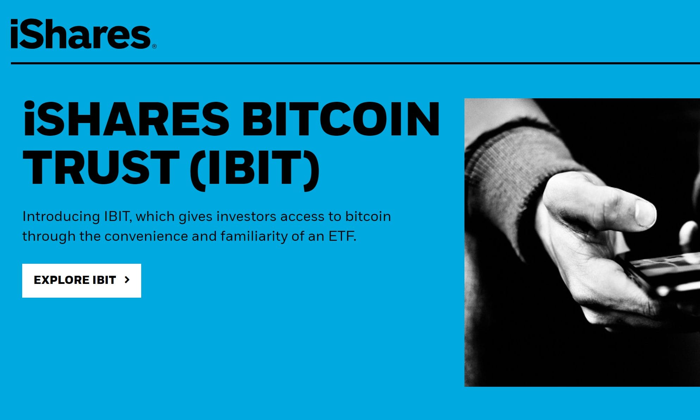Bitcoin (BTC) is currently in a critical consolidation phase, following an impressive surge to record highs of $111,880 last week. This period of stabilization comes amid substantial profit-taking by traders, raising questions about the sustainability of its previous momentum. As highlighted in the latest Bitcoin price analysis, the dynamics of the BTC market trends indicate that while recent inflows into exchange-traded funds (ETFs) have provided some support, emerging macroeconomic risks could dampen further gains. Additionally, with heightened volatility seen in the Bitcoin futures market, the market is navigating through a landscape marked by cautious optimism and potential retraction. The current scenario underscores the need for careful monitoring as Bitcoin’s price action may hinge on the interplay between selling pressure and renewed spot demand, especially in light of recent market fluctuations.
At the moment, Bitcoin is experiencing a significant period of price stabilization, often referred to as market consolidation. This phase is characterized by various traders engaging in profit-taking and reassessing their positions after a substantial upward movement. The interplay of market motivations is critical here, as the trends in Bitcoin investments, including those seen in futures contracts and exchange-traded vehicles, influence overall market behavior. As on-chain metrics suggest a cooling off, observing these patterns could provide insights into potential future price movements of Bitcoin, especially as investors digest broader economic signals and react accordingly.
Understanding the Bitcoin Consolidation Phase
Bitcoin’s current consolidation phase follows an impressive surge, where it reached a record high of $111,880. This consolidation is essential as it allows the market to stabilize after a significant price increase, giving traders a more predictable framework for planning their next moves. During this phase, buying and selling actions reach a point of balance, usually leading to a pause in volatility. While the Bitcoin price fluctuates within a defined range, market participants, both new and experienced, tend to reassess their strategies and positions.
However, consolidation isn’t free from risks. With a prevalent trend of profit-taking evident in the market, traders are increasingly selling off their holdings, which could disrupt the prevailing momentum. The recent sell-off was largely driven by two main contributors: long-term holders who recognized their opportunity to cash in substantial profits and newer dip buyers who exited the market at breakeven. As these actions create an overhead supply glut, it becomes crucial for Bitcoin to see a rise in inflows, possibly from renewed institutional interest in cryptocurrency.
Impact of Profit-Taking on BTC Market Trends
Profit-taking has introduced a layer of complexity into Bitcoin’s market trends as demonstrated in recent trading actions. Following its peak, we observed traders liquidating positions, leading to a notable drop below the $107,000 threshold. Such behavior generally reflects a conservative sentiment among traders, showcasing their hesitance to hold positions during potentially turbulent times prompted by macroeconomic factors. This cautious approach takes the form of reduced open interest in the futures market, signifying that many traders are opting to limit their exposure.
The influence of profit-taking extends beyond immediate price fluctuations; it also alters the broader sentiment of BTC market trends. Despite ongoing institutional support through avenues like exchange-traded funds (ETFs), the cautious sentiment can impede bullish momentum, as traders may choose to wait for more favorable conditions before re-entering the market. Historically, such behavior suggests that the market often rebounds stronger once the dust settles from profit-taking events, leading to a recalibrated entry point for new and existing investors.
Analyzing Bitcoin’s Future Trading Range
As per the current analysis, Bitcoin is anticipated to fluctuate within a tighter trading range of $106,000 to $111,000 due to prevailing macro risks and profit-taking behavior. This trading range suggests that Bitcoin may face difficulties in breaking higher unless fresh demand enters the market to absorb the selling pressure. The significance of upcoming economic news, including any developments surrounding tariffs and ETF allocations, cannot be understated, as they may dictate shifts within this range.
On-chain analysis indicates a cooling off in Bitcoin’s previous enthusiastic market behavior, which once marked an extraordinary seven-week streak of price increases. The normalization of leverage, reflected in reduced speculative trading, further underscores the importance of establishing a base within this range. Traders should closely monitor these factors as the market evolves, with potential signals indicating when to enter or exit positions. Understanding the dynamics within this estimated trading range will be essential for making informed decisions in the Bitcoin futures market.
Role of Exchange-Traded Funds in Bitcoin Dynamics
Exchange-traded funds (ETFs) play a pivotal role in shaping Bitcoin’s market dynamics, particularly during phases of volatility and consolidation. The increasing demand for Bitcoin ETFs has provided significant inflows, driving BTC prices upward. However, the current phase indicates a slowdown in ETF allocations, as highlighted by the latest data, suggesting that traders will need to reassess their strategies based on this key market component.
Moreover, the presence of ETFs offers investors a structured way to gain exposure to Bitcoin without having to navigate the complexities of direct crypto trading. As Bitcoin approaches a consolidation phase, the effectiveness of ETFs in bringing stability and new participants into the market becomes increasingly critical. A rebound in ETF interest could act as a catalyst for Bitcoin’s price recovery, while a lack of traction may keep prices subdued as traders aim to navigate through existing overhead supply.
Bitcoin’s Historical Context of Consolidation
Historically, Bitcoin has experienced several consolidation phases, often serving as a precursor to future price surges. This historical context suggests that periods of sideways trading can clear excess leverage from the market, allowing for a sustainable growth trajectory once the market stabilizes. Understanding these historical patterns can provide insight into potential future movements for Bitcoin, enabling traders to position themselves accordingly.
The lessons learned from past consolidation periods indicate that patience is key for market participants. Following significant price retracements, it’s not uncommon for Bitcoin to enter a phase of indecisiveness before forming a new bullish trend. This aspect emphasizes the importance of maintaining a long-term perspective, particularly in the often volatile landscape of cryptocurrency trading. Investors who can weather these consolidation phases typically find opportunities once new bullish momentum is established.
Macroeconomic Factors Influencing Bitcoin’s Trajectory
Macroeconomic factors play an influential role in Bitcoin’s price trajectory, with developments like tariff announcements directly impacting trader sentiment. The recent tariff threat from the former President has triggered a risk-averse reaction among market participants, leading to a rapid price adjustment and signaling caution within the trading community. Recognizing the interconnectedness between macroeconomic news and cryptocurrency performance is essential for investors seeking to navigate these turbulent waters effectively.
Moreover, the reaction to external economic stimuli reveals the sensitivity of Bitcoin to broader market movements. As the cryptocurrency market matures, staying informed about global economic trends will be crucial for understanding Bitcoin’s potential price movements. Analyzing key indicators and their implications on trading can empower investors to make data-driven decisions, ultimately enhancing their ability to capitalize on market volatility.
Short-Term Holder Dynamics in Bitcoin and Market Movements
The dynamics influenced by short-term holders (STH) within the Bitcoin ecosystem provide valuable insights into market trends. Recent data indicates a surge in realized profits among short-term holders, marking significant selling activity that may impact the overarching market sentiment. With the cost basis for these holders rising to a critical threshold, many choose to cash-in on their profits, which can lead to increased volatility and potential price fluctuations.
By analyzing short-term holders’ behaviors, traders can glean insights into potential market trends. As these holders realize gains, it often leads to a reduction in selling pressure if buying continues. A balanced market with consistent demand can support a favorable trading environment for Bitcoin, whereas a jarring release by short-term holders could restrict upward momentum. Keeping an eye on shifts in STH activity can help traders navigate Bitcoin’s price trajectory with greater precision.
Significance of the Realized Profit/Loss Ratio
The Realized Profit/Loss Ratio serves as a crucial metric for assessing the current market sentiment and potential future movements of Bitcoin. A surge into ranges typically associated with late-stage distributions can signal a significant turning point for prices, wherein profit-taking may intensify. Traders are cautioned to remain vigilant during these moments, as substantial realized profits can dampen upward momentum unless superhero new capital enters the ecosystem.
Furthermore, monitoring the Realized Profit/Loss Ratio provides traders with a clearer view of market health. An increase in selling pressure amid high profits could indicate that the market is approaching a saturation point, potentially heightening the risk for new investors. Analyzing this ratio alongside other key market indicators can empower traders to make informed decisions in navigating the Bitcoin landscape.
Future Outlook for Bitcoin in 2025
The outlook for Bitcoin heading into 2025 hinges on a combination of market dynamics, macroeconomic factors, and trader psychology. With Bitcoin currently dominating the crypto space, reaching a market cap of $2.17 trillion, market players are keenly observing ongoing developments. As traders seek clarity on regulatory conditions, ETF allocations, and inflation concerns, the trajectory is likely to be heavily influenced by these factors.
Moreover, the potential for Bitcoin to break through current resistance levels relies on renewed demand from both retail and institutional buyers. As historical patterns suggest, consolidation phases often precede significant bullish runs, thus giving traders a sense of optimism. Keeping an eye on these evolving trends and macroeconomic indicators in 2025 will be crucial for anyone involved in the Bitcoin market.
Frequently Asked Questions
What does it mean for Bitcoin to be in a consolidation phase?
A Bitcoin consolidation phase refers to a period where the price stabilizes after significant fluctuations. Following the latest high of $111,880, Bitcoin is experiencing this phase to solidify the market structure. This allows traders to reassess their positions, often leading to a sideways trading pattern until fresh demand can counterbalance profit-taking actions.
How does Bitcoin price analysis indicate a healthy consolidation period?
Bitcoin price analysis shows that the recent consolidation phase is healthy, characterized by declining open interest and negative futures funding rates. Such indicators suggest that traders are reducing exposure amid profit-taking, which helps reset leverage and positions Bitcoin for potential upward momentum once demand resumes.
What impact does profit-taking have during Bitcoin’s consolidation phase?
Profit-taking during Bitcoin’s consolidation phase can lead to increased selling pressure, causing potential disruptions in price momentum. It reflects traders cashing in on gains after the price rise, which can create an ‘overhead supply glut,’ limiting further price increases until new capital enters the market.
How are Bitcoin futures markets affected during consolidation phases?
Bitcoin futures markets often show changes in funding rates during consolidation phases. In the current situation, negative funding rates indicate that traders are quickly unwinding leveraged positions, reflecting caution amid market uncertainty and profit-taking. This leads to a realignment of trading ranges until new demand can absorb existing supply.
What role do exchange-traded funds (ETFs) play during Bitcoin’s consolidation phase?
ETFs play a significant role in Bitcoin’s market dynamics during consolidation phases. If ETF inflows slow down or reverse, it could lead to reduced buying pressure, complicating efforts to emerge from the overhead supply created by profit-taking. Increased ETF allocations can boost Bitcoin’s price as they introduce new capital into the market.
How long can Bitcoin remain in a consolidation phase before moving higher?
The duration Bitcoin stays in a consolidation phase can vary, but historically, these periods precede upward price movements. The extent of the consolidation depends on various factors, including macroeconomic developments and the resumption of strong capital inflows. Analysts often suggest that Bitcoin could fluctuate between specific price ranges until market conditions support another rally.
How do macroeconomic developments influence the Bitcoin consolidation phase?
Macroeconomic developments, such as tariff threats or shifts in investor sentiment, heavily influence Bitcoin’s consolidation phase. Such risks can lead to profit-taking and increased volatility, making it essential for traders to monitor external factors that could either support a price breakout or extend the consolidation period.
What indicators signal that Bitcoin might be ready to exit the consolidation phase?
Indicators that might suggest Bitcoin is poised to exit the consolidation phase include rising spot demand, increasing ETF inflows, and positive market sentiment reflected in futures markets. Additionally, if buyers absorb the existing overhead supply created by profit-taking, this could signal a potential breakout to higher price levels.
Why is understanding Bitcoin market trends crucial during its consolidation phase?
Understanding Bitcoin market trends during a consolidation phase is crucial as it provides insights into the overall market sentiment, trader behavior, and potential future price movements. By analyzing trends, traders can make informed decisions on entry and exit points to maximize profit while minimizing risk during these uncertain times.
What patterns typically emerge during Bitcoin’s consolidation phases?
During Bitcoin’s consolidation phases, patterns such as sideways trading or slight retracement often emerge. These patterns indicate a market that is determining its next significant move, either towards a sustained rally or further corrections, depending on the balance between buying and selling pressure.
| Key Point | Details |
|---|---|
| Current Status | Bitcoin is in a consolidation phase after reaching a record high of $111,880. |
| Profit-Taking Risks | Substantial profit-taking actions are putting pressure on Bitcoin’s price. |
| Market Influence | Factors such as tariff threats have prompted a risk-averse market reaction that affected BTC prices. |
| Futures Funding | Futures funding rates turned negative as traders adjusted their positions during the pullback. |
| Seller Dynamics | Selling pressure has come from profit-taking dip buyers and addresses exiting at breakeven. |
| Trading Range | Bitcoin is expected to fluctuate between $106,000 and $111,000 until fresh demand emerges. |
| Historical Perspective | Consolidation phases have historically led to upward advances in price. |
| Market Data | As of May 26, 2025, Bitcoin’s price is $109,177.02 with a market cap of $2.17 trillion. |
Summary
The Bitcoin consolidation phase is a crucial period during which Bitcoin’s price is stabilizing after experiencing significant highs. While facing challenges such as profit-taking and external market pressures, this phase could set the stage for future price increases. Understanding the dynamics of this consolidation can provide traders with insights into potential market movements and opportunities.
Bitcoin consolidation phase is currently in the spotlight as the cryptocurrency stabilizes after reaching a historic peak of $111,880. This period of price consolidation comes in the wake of significant profit-taking actions, reflecting evolving BTC market trends and influencing Bitcoin price analysis. The recent surge, driven by robust demand and inflows into exchange-traded funds (ETFs), has led to fluctuations that necessitate careful observation of the crypto profit-taking behavior among investors. Understanding the dynamics of Bitcoin’s consolidation phase is essential for traders looking to navigate this volatile market environment effectively. As the Bitcoin futures market stabilizes, maintaining awareness of these factors will be crucial for anticipating potential price movements and investment strategies in the coming weeks.
The current state of Bitcoin price stabilization can also be described as a period of market consolidation, wherein the cryptocurrency seeks to find a balance after unprecedented highs. This phase often indicates a pause for traders to reassess their strategies and understand BTC’s trajectory within the broader crypto landscape, especially amidst profit realization among investors. In evaluating recent market trends for Bitcoin, it becomes evident that fluctuations prompted by external factors, like geopolitical events and regulatory pressures, play a vital role in shaping investor sentiment and trading actions. Furthermore, the interplay between traditional finance instruments, such as exchange-traded funds, and the digital currency realm signals an evolving financial ecosystem. Observing how Bitcoin integrates with these dynamics can yield insights into future price potentials and investment opportunities.















